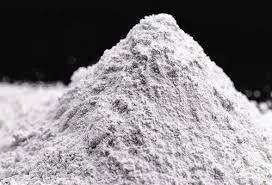
Nov . 25, 2024 11:10 Back to list
HPMC Applications in Skim Coat for Enhanced Performance and Durability Solutions
Understanding HPMC for Skim Coat Applications
Hydroxypropyl methylcellulose (HPMC) has gained significant attention in the construction industry, particularly for its role in enhancing the performance of skim coats. Skim coats are thin layers of material applied to walls and ceilings to create a smooth and uniform surface. They are commonly used in both residential and commercial applications, often serving as a finishing layer before painting or wallpapering. This article explores the importance of HPMC in skim coat formulations and its benefits for construction professionals.
HPMC is a non-ionic cellulose ether that is derived from natural cellulose. It is widely used as a thickening agent, stabilizer, and film-forming agent in various applications. In skim coats, HPMC enhances workability, improves adhesion, and increases the flexibility of the mixture, making it an indispensable additive for contractors.
Understanding HPMC for Skim Coat Applications
In addition to improving workability, HPMC also enhances the adhesion properties of skim coats. Adhering to diverse surfaces, such as concrete, plaster, or drywall, is crucial for the longevity of a skim coat. HPMC promotes better bonding between the skim coat and the substrate, reducing the chances of delamination or peeling. This is especially important in environments that experience moisture fluctuations, where traditional skim coats without additives may fail over time.
hpmc for skim coat

The impact of HPMC on the drying time of skim coats is another noteworthy advantage. Typically, moisture retention in a skim coat can lead to extended drying times, which can delay further work. However, HPMC helps to regulate water evaporation, contributing to an efficient drying process. This characteristic allows contractors to complete projects more quickly, ultimately improving productivity and reducing labor costs.
Furthermore, HPMC contributes flexibility to skim coats, allowing them to better withstand thermal expansion and contraction. This is particularly valuable in regions with fluctuating temperatures where materials can expand and contract. A skim coat that retains its flexibility is less likely to crack or exhibit other forms of damage, ensuring that the finished surface maintains its aesthetic appeal for a longer duration.
From an environmental perspective, HPMC is a favorable choice for skim coat formulations. Being derived from natural cellulose, HPMC is biodegradable and non-toxic. This aligns with the growing trend towards environmentally-friendly construction practices, enabling contractors to offer sustainable solutions for their clients. In addition, HPMC is compatible with a wide range of other additives, allowing for custom formulations that meet specific project requirements.
In conclusion, the use of hydroxypropyl methylcellulose (HPMC) in skim coat applications presents numerous advantages for construction professionals. Its ability to enhance workability, improve adhesion, regulate drying time, and provide flexibility makes it a valuable additive in achieving high-quality finishes. As construction practices continue to evolve, the demand for effective, sustainable solutions such as HPMC will likely grow, paving the way for improved performance in skim coat applications. By utilizing HPMC, contractors can ensure that their projects not only meet aesthetic expectations but also stand the test of time.
-
Versatile Hpmc Uses in Different Industries
NewsJun.19,2025
-
Redispersible Powder's Role in Enhancing Durability of Construction Products
NewsJun.19,2025
-
Hydroxyethyl Cellulose Applications Driving Green Industrial Processes
NewsJun.19,2025
-
Exploring Different Redispersible Polymer Powder
NewsJun.19,2025
-
Choosing the Right Mortar Bonding Agent
NewsJun.19,2025
-
Applications and Significance of China Hpmc in Modern Industries
NewsJun.19,2025







